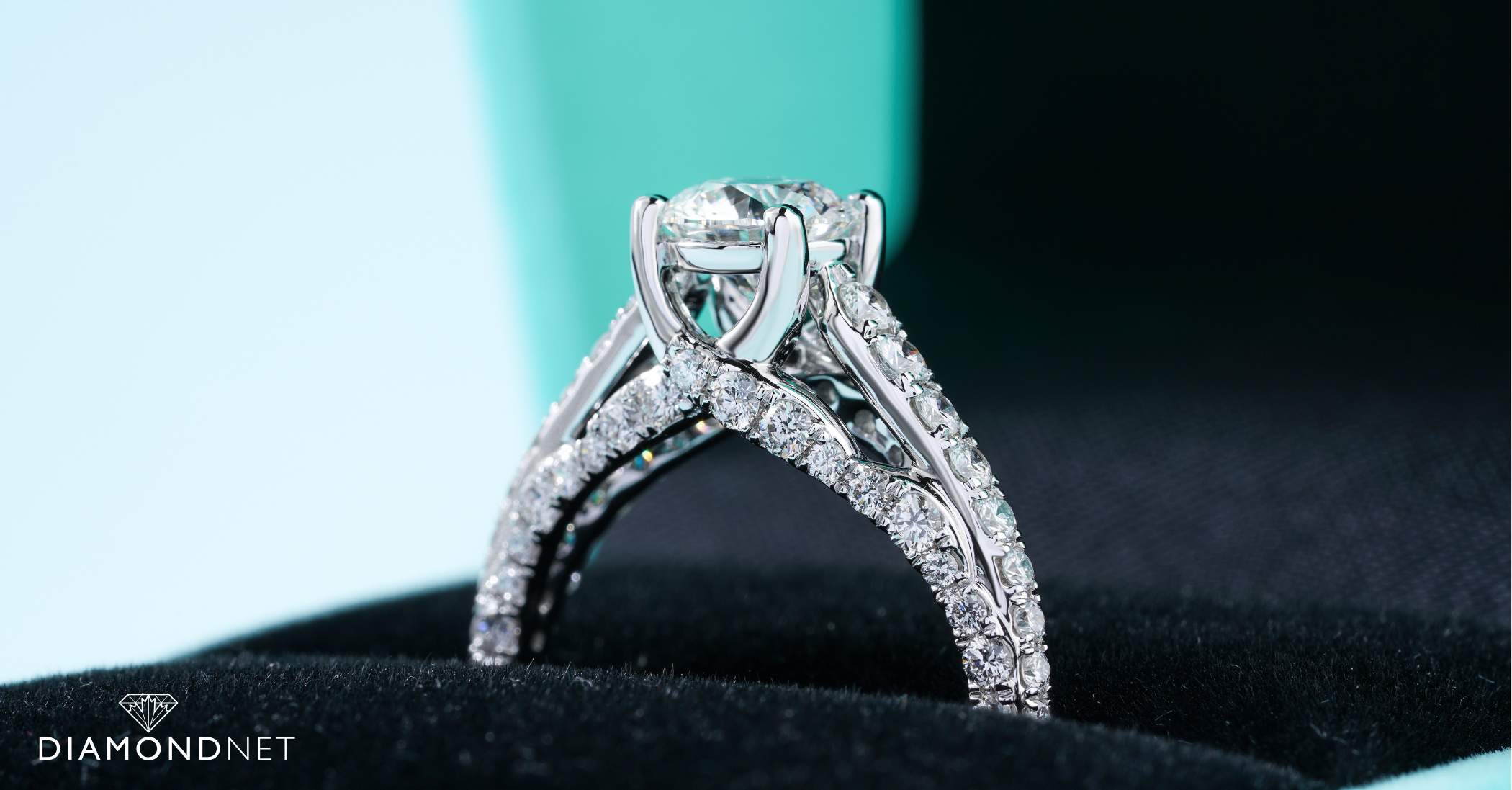Diamonds have fascinated people for centuries with their unmatched brilliance and rarity. As synthetic gem technology advances, distinguishing genuine diamonds from imitations has become increasingly important.
In this blog, we’ll guide you through simple home tests and professional gemological evaluations to help determine a diamond’s authenticity. Equip yourself with the knowledge to make confident, informed decisions when purchasing diamonds.
What does a real diamond look like?
Real diamonds are distinguished by their unique brilliance and light reflection, thanks to their high refractive index. When light strikes a diamond, it produces a dazzling white sparkle, unlike artificial stones like glass or cubic zirconia, which often appear dull in comparison.
Another key feature is the precision of a diamond’s facets. The edges and cuts in a real diamond are sharp and well-defined, enhancing its overall brilliance. In contrast, imitation stones often have rounded or inaccurately cut facets.
Additionally, genuine diamonds typically contain inclusions—tiny natural flaws formed during their creation. These imperfections are absent in most imitation stones, which are usually flawless.

How can you test if a diamond is real at home?
Testing a diamond’s authenticity is essential, whether you’re purchasing a new gem or verifying an existing one. With the rise of synthetic and imitation diamonds, knowing how to identify a real diamond has never been more important. Here are some simple at-home methods to help you distinguish between genuine and fake diamonds.
The Fog Test
The fog test is one of the easiest ways to check a diamond’s authenticity. Hold the diamond or ring between your fingers and breathe on it, similar to fogging up a mirror. A real diamond disperses heat quickly, so it won’t fog up easily.
In contrast, stones like cubic zirconia, which have lower thermal conductivity, will stay fogged for a few seconds longer.
The Water Test
To perform the water test, fill a glass with water and gently drop the loose diamond into it. A real diamond, being denser, will sink to the bottom. Stones with lower density, such as cubic zirconia, may float or sink more slowly. Note that this test is only suitable for loose stones, not mounted ones.
The UV Light Test
Using UV light can help identify a diamond’s authenticity. Many real diamonds exhibit a blue fluorescence under UV light, while most fakes do not. However, not all genuine diamonds fluoresce, and some imitations are treated to mimic this effect, so this test should be combined with other methods for greater accuracy.
The Scratch Test
Diamonds are the hardest natural material, ranking 10 on the Mohs scale. To perform the scratch test, gently scratch the diamond against a piece of glass. A real diamond will leave a mark on the glass, whereas a fake diamond may be scratched itself. Use caution with this method, as it risks damaging both the stone and the glass.
The Loupe Test
Using a jeweler’s loupe, a small magnifying glass for gemstones, can reveal important details. Real diamonds often have tiny natural inclusions—flaws formed during their creation—visible under magnification. Synthetic stones, such as cubic zirconia or lab-grown diamonds, typically appear flawless.
Additionally, the edges of a genuine diamond are sharp and precise, unlike the rounded edges often found in imitation stones.

Professional Tests to Verify a Diamond’s Authenticity
While home tests can provide initial clues, professional evaluations offer a definitive answer. Gemologists and jewelers rely on advanced tools and techniques to confirm a diamond’s authenticity. Below are the most commonly used professional methods:
The Diamond Tester
A diamond tester is a handheld device that measures a gemstone’s thermal conductivity. Real diamonds conduct heat uniquely compared to most other stones. When the tester touches the stone, it provides a reliable reading to confirm whether the diamond is genuine.
The Refractivity Test
Diamonds are prized for their ability to bend light. Using a refractometer, gemologists measure the stone’s refractive index to distinguish diamonds from simulants. A genuine diamond has a high refractive index, creating its signature sparkle and brilliance.
The Electronic Conductivity Test
This test measures a stone’s electrical conductivity. It is particularly useful for differentiating diamonds from synthetic moissanite, which is also conductive. By detecting electrical properties, this method provides an additional layer of verification.
Certification and Grading Reports
The most trusted way to verify a diamond’s authenticity is through certification by reputable gemological laboratories like GIA (Gemological Institute of America) or IGI (International Gemological Institute). These organizations provide detailed reports on the diamond’s carat weight, colour grade, clarity grade, and cut.
A certified diamond comes with documentation confirming its quality and authenticity, offering peace of mind to buyers.
How can I tell if a diamond is GIA-certified?
To verify if a diamond is GIA-certified, check for the accompanying GIA certificate. This detailed report confirms the diamond’s quality and authenticity, including its cut, colour, clarity, and carat weight.
Each GIA-certified diamond also has a unique identification number, often laser-inscribed on its girdle. You can cross-reference this number with the certificate or verify it on the GIA website for added assurance. When purchasing a diamond, always ask to see the GIA certificate to ensure its certification and authenticity.
Conclusion
Determining a diamond’s authenticity is essential to ensure its value and quality. While at-home tests offer helpful initial insights, professional certification, such as GIA certification, is the most reliable way to verify a diamond’s authenticity.
A GIA-certified diamond guarantees confidence in your investment by meeting rigorous industry standards.
At DiamondNet, we proudly offer a curated collection of the finest GIA-certified diamonds. Each piece is crafted to meet the highest benchmarks of quality and authenticity. Explore our collection today and shop with confidence, knowing your diamond is backed by trusted certification.



